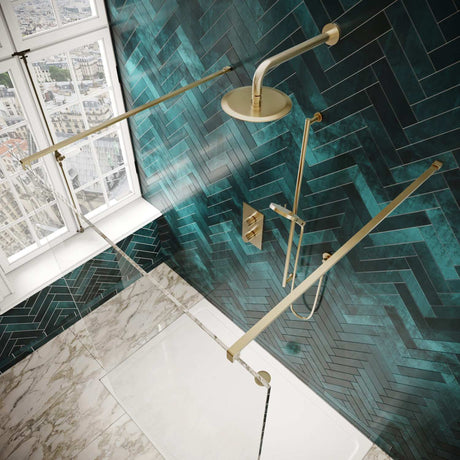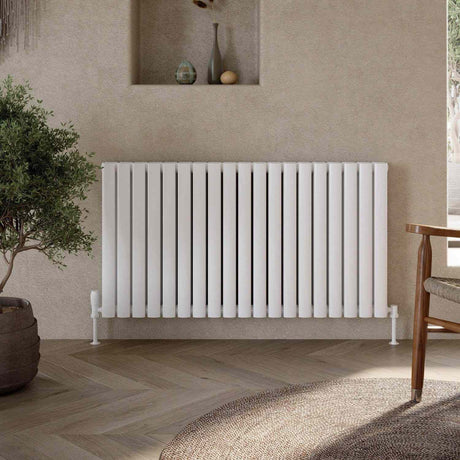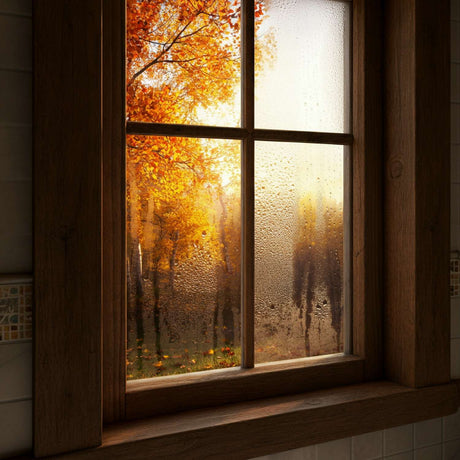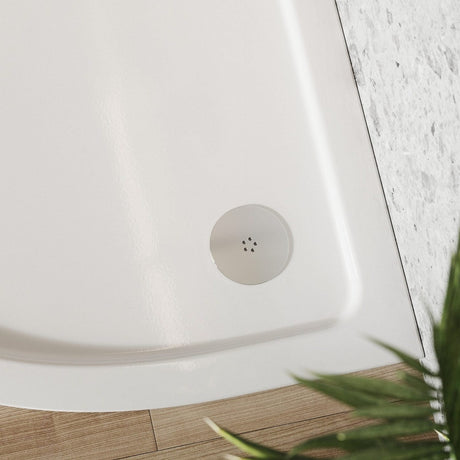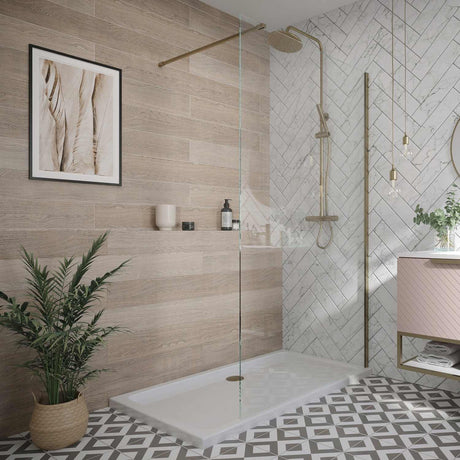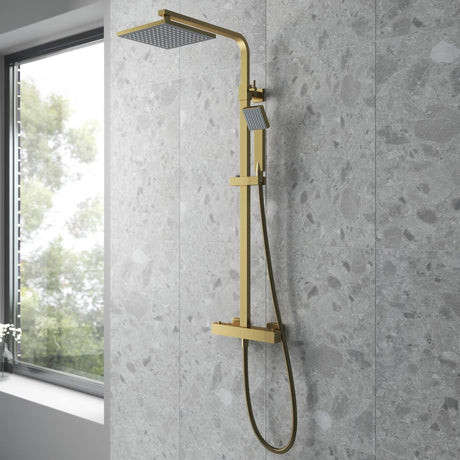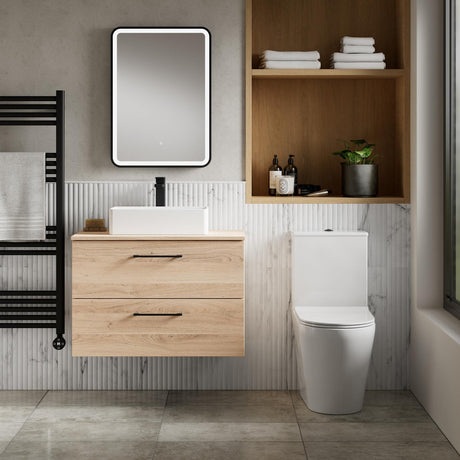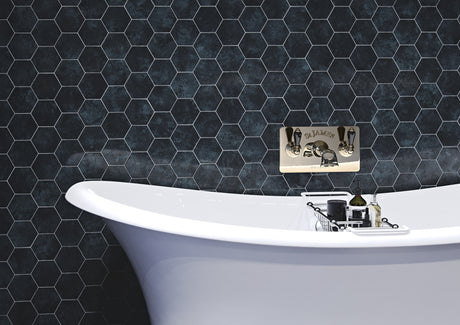As autumn arrives and temperatures begin to drop, transforming your bathroom from a summer space into a warm, comfortable retreat becomes essential. The cooler months demand different considerations for your bathroom environment, from heating solutions to moisture management. This comprehensive guide from Asturias Bathrooms will help you create a cosy and functional autumn bathroom that keeps you comfortable throughout the season.
Create Warmth with Cosy Towels and Textiles
Starting with the simplest changes, swap your lightweight summer towels for thicker, more absorbent options that provide better warmth retention. Look for towels with higher GSM ratings (grams per square metre) - typically 500-700 GSM offers excellent absorbency and comfort for autumn use.
Consider adding a warm area rug beside your bath or shower. Not only does this provide a soft, warm surface for your feet, but it also adds insulation to cold bathroom floors. Choose materials like cotton or bamboo that can handle bathroom humidity while providing comfort.
Install a Heated Towel Rail for Ultimate Comfort
A heated towel rail offers one of the most cost-effective heating solutions for your bathroom. These dual-purpose fixtures warm your towels whilst providing supplementary room heating. For detailed information on the benefits, read our guide on Five Benefits of a Heated Towel Rail.
Modern heated towel rails come in various sizes and styles, from compact ladder designs perfect for smaller bathrooms to larger panel styles for spacious rooms. Electric models, such as the Smedbo Dry Tree Electric 1720mm Black Towel Warmer, offer precise temperature control and can operate independently of your central heating system, making them particularly cost-effective during autumn when you might not want full home heating yet.
Create an Autumnal Atmosphere
Transform your bathroom's ambience with autumn-scented candles featuring warming fragrances like cinnamon, vanilla, or woodsy notes. These scents create a cosy atmosphere whilst the candle flames provide gentle, ambient lighting during shorter autumn days.
Proper lighting becomes increasingly important as daylight hours decrease. Ensure all bathroom lights are functioning correctly, including pull cord switches and any illuminated bathroom cabinets. For comprehensive safety information about bathroom lighting, our guide on Bathroom Zones and IP Ratings Explained provides thorough explanations of electrical safety requirements.
Choose the Right Heating Solution
Understanding your bathroom heating options helps you make informed decisions about keeping your cold bathroom comfortable throughout autumn.
Radiators vs Heated Towel Rails vs Underfloor Heating
Traditional Radiators provide powerful heat output and work well in larger bathrooms. A radiator connects to your central heating system and offers reliable, consistent warmth.
Heated Towel Rails combine towel warming with room heating, making them space-efficient and cost-effective. They're available in electric or central heating models.
Underfloor Heating provides even heat distribution and works particularly well with stone or ceramic tile floors, though installation costs are typically higher.
Choosing the Right Size for Your Bathroom
Calculate your bathroom's heat requirements using the room's dimensions. As a general guide, you'll need approximately 100-150 watts per square metre for adequate heating. Consider factors like ceiling height, window size, and insulation quality when determining your needs.
Understanding Bathroom Zones for Electrical Safety
Bathroom zones determine where electrical heating equipment can be safely installed. Zone 0 covers areas inside baths and shower enclosures, Zone 1 extends above these areas, Zone 2 surrounds Zone 1, and Zone 3 covers the remaining bathroom space. Each zone has specific requirements for electrical equipment ratings and installation methods.
Prevent Dampness and Mould
Bathroom heating plays a crucial role in preventing moisture-related problems. Cold bathroom surfaces encourage condensation, which can lead to mould growth and structural damage. Learn comprehensive mould prevention and removal techniques in our guide on How to Remove Mould from the Bathroom.
Tips to Keep Moisture Levels Low
Improve Ventilation: Use extractor fans during and after showers or baths. Open windows when the weather permits to allow fresh air circulation.
Wipe Down Surfaces: Remove excess moisture from tiles, shower screens, and bath panels after use to prevent water accumulation.
Regular Maintenance: Check and clean extractor fans regularly. Ensure they're working efficiently to remove humid air.
Address Leaks Promptly: Fix any dripping taps or loose sealant immediately to prevent ongoing moisture problems.
Use Appropriate Materials: Choose mould-resistant grout and sealants for areas prone to moisture exposure.
Plan Your Autumn Bathroom Transformation
Creating a comfortable autumn bathroom doesn't require a major renovation. Start with simple changes like switching towels and adding warming scents, then consider larger investments like heated towel rails or improved lighting.
Budget for gradual improvements throughout the season. You might begin with cost-effective solutions like area rugs and better ventilation, then add heating elements as the weather becomes colder.
Regular maintenance becomes more important as humidity levels change with outdoor temperatures. Check seals around baths and showers, clean extractor fans, and ensure heating elements are working efficiently.
Your autumn bathroom should provide comfort, warmth, and functionality throughout the cooler months. By addressing heating, moisture control, and ambience, you'll create a space that makes those chilly mornings and evening routines more enjoyable.






